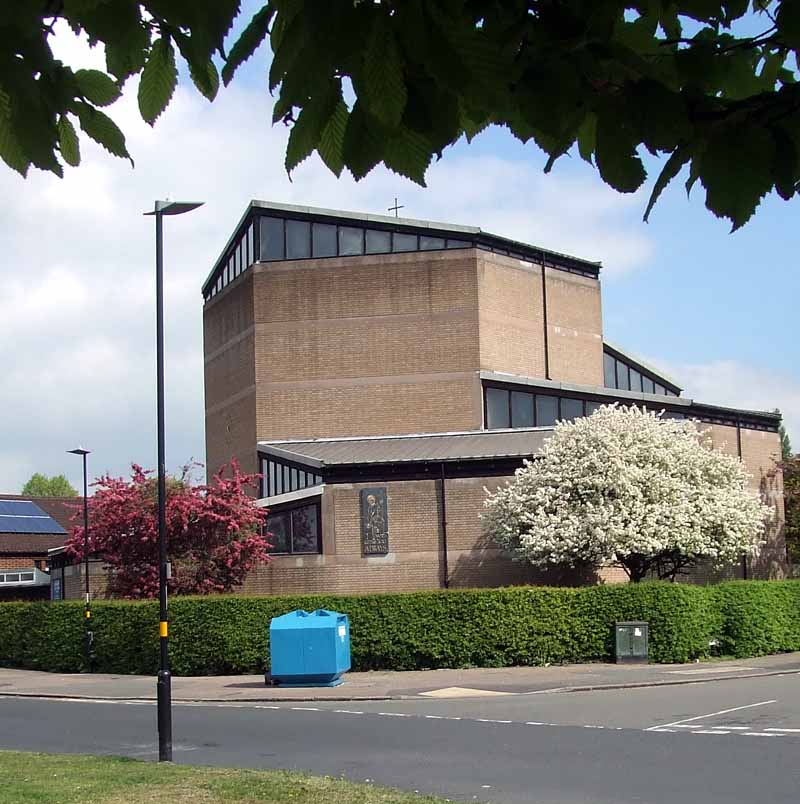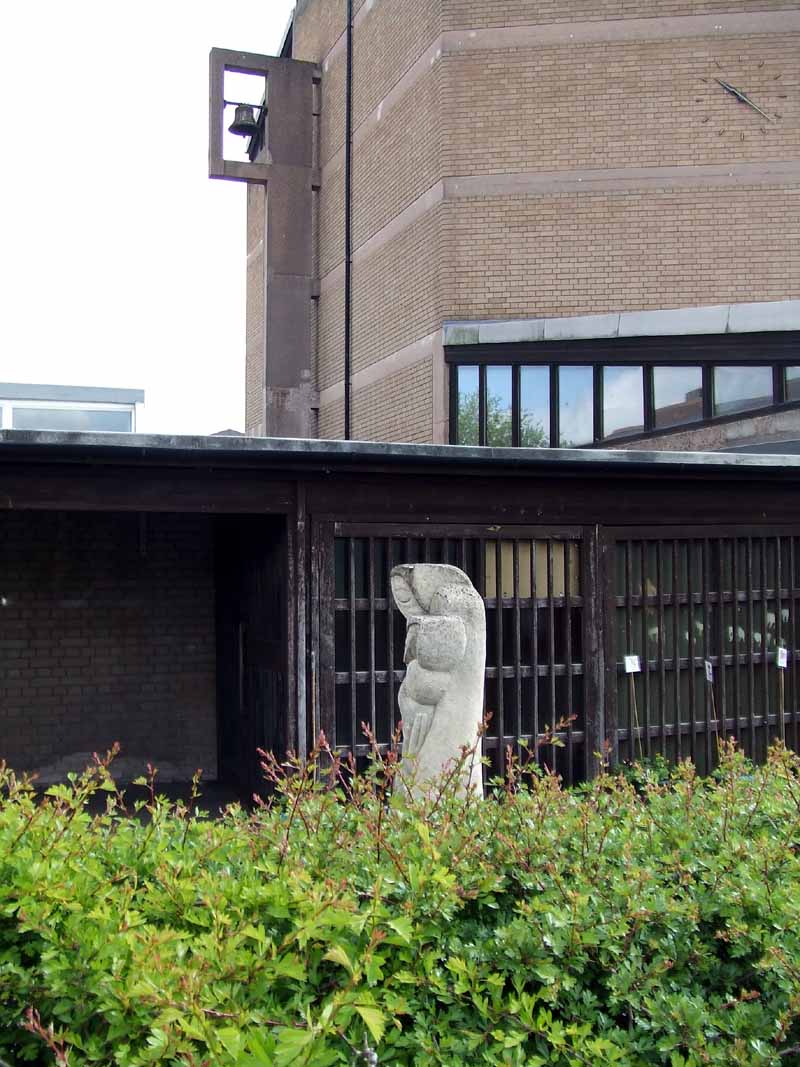St Matthew’s Church deserves to be recognised as one of Birmingham’s star architectural attractions, believes Alan Clawley.
A Brutalist parish church, St Matthews in Perry Beeches, designed by Maguire and Murray and opened in 1963 is a building of such architectural and historic importance that it is Listed Grade II.
Now, a photograph of the interior adorns the front cover of a new book by Gerald Adler published in 2012 by the Royal Institute of British Architects with English Heritage and the Twentieth Century Society in a series on Twentieth Century architects (the same series in which the John Madin book was published in 2011).
At a time when the label ‘Brutalism’ tends to be used as a term of abuse it’s refreshing to see a Brutalist building officially recognised for its quality. It is rather a hidden gem though, and I have to confess that I’ve passed it many times when driving along the Aldridge Road without realising its importance. It’s set back from the main road at a triangular green space. It stands on the corner of Birdbrook Road near what used to be called North Birmingham College.
Adler’s description of the building in his book is worth quoting. He writes, ‘The bulk of the church, comprising a great polygonal tower, made of unadorned brickwork banded at regular intervals with stripes of concrete, is quite extraordinary in context. It is capped by a low double-pitched roof simply glazed at both gable ends; clustering around its base is a series of similar forms, with the same roofs leaning against each side of the polygon, each one increasing in height by a band of brickwork. The affinity between a 1960s church and the Victorian use of ‘streaky bacon’ brickwork a hundred years earlier was less surprising than it seems, since many architects of the New Brutalist generation admired the work of William Butterfield, one of the masters of coloured brick, for its rigour and avoidance of prettiness.’
With its bare brick and concrete I see it as a church version of the famous Hunstanton School in Norfolk that was designed by Alison and Peter Smithson and which expressed their rejection of the folksy Swedish or Festival of Britain style of architecture that dominated the 1950s.
In chapter 1 of his book, Adler characterises Maguire’s work as ‘humanist Brutalism’ whilst noting that the Smithsons defined their vision of New Brutalism at its roots as ‘reverence for materials’. Adler concludes, ‘Of course `this line of thinking is complicated by the divergence between the ‘vulgar’ and popular understanding of Brutalism as something mechanical and crude, and the reality of the core movement and its values of honesty, materiality, place, social purpose and strong image. In a sense, all proper Brutalism is humanist at base.’
St Matthews Church deserves to be recognised as one of Birmingham’s star architectural attractions. Robert Maguire specialised in church architecture and is best known for designing St Paul’s Church Bow Common in London’s East End which was opened in 1960.




